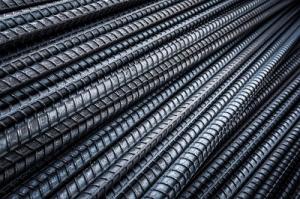Steel Market Set to Soar, Anticipated to Achieve USD 1,200 Billion by 2035| At 1.96% CAGR
The Steel Market is projected to grow USD 1,200 billion by 2035, registering a compound annual growth rate CAGR of 1.96% during the forecast period till 2035
BERLIN, GERMANY, August 6, 2025 /EINPresswire.com/ -- Steel is one of the most important materials in the modern world. It has played a pivotal role in shaping the industrial revolution, and its importance remains undiminished today. Whether it's in the construction of skyscrapers, the manufacturing of cars, or the production of household appliances, steel is an indispensable part of our daily lives.The Steel Market was valued at 951.05 USD Billion in 2023 and is projected to reach 1,200 USD Billion by 2035, growing at a CAGR of 1.96% from 2025 to 2035.
The Composition of Steel
Steel is primarily made of iron and carbon, with the carbon content typically ranging from 0.02% to 2.1% by weight. This small but crucial amount of carbon gives steel its strength and durability. The addition of carbon to iron changes its properties significantly, enhancing its hardness, tensile strength, and resistance to wear and tear. While carbon is the primary alloying element in steel, other elements such as chromium, manganese, and nickel are also added to modify its properties and enhance its versatility.
The process of steel-making involves extracting iron from iron ore, which is then combined with carbon to form various grades of steel. These grades vary in terms of their carbon content, alloying elements, and intended uses, making steel an incredibly diverse material with a wide range of applications.
Types of Steel
Steel can be broadly categorized into two main groups: carbon steel and alloy steel.
Carbon Steel: This is the most common type of steel, making up the majority of steel production worldwide. Carbon steel is classified into three categories based on carbon content:
Low-carbon steel: Contains less than 0.3% carbon and is used for manufacturing products that require good formability, such as pipes, sheets, and panels.
Medium-carbon steel: Contains between 0.3% and 0.6% carbon, providing a balance between strength and ductility. It is often used in automotive parts, gears, and rails.
High-carbon steel: Contains more than 0.6% carbon and is used for applications that require high strength and hardness, such as cutting tools and industrial blades.
Alloy Steel: This type of steel includes a variety of elements such as nickel, chromium, molybdenum, and vanadium, which are added to improve specific properties like corrosion resistance, strength at high temperatures, and toughness. Alloy steels are used in industries that require specialized materials, such as aerospace, chemical processing, and energy production.
Additionally, stainless steel, a popular subset of alloy steel, contains at least 10.5% chromium, making it highly resistant to corrosion and staining. Stainless steel is widely used in applications like kitchen appliances, medical devices, and food processing equipment.
The Steel Production Process
The production of steel has evolved significantly over the years. Today, most steel is produced using one of two methods: the Blast Furnace (BF)-Basic Oxygen Furnace (BOF) method and the Electric Arc Furnace (EAF) method.
Blast Furnace and Basic Oxygen Furnace (BOF): This method is used for producing large quantities of steel. Iron ore, coke (a form of carbon derived from coal), and limestone are fed into a blast furnace, where they are heated to temperatures exceeding 1,500°C. The coke reacts with the iron ore to produce molten iron, which is then transferred to a basic oxygen furnace. In the furnace, oxygen is blown into the molten iron, reducing the carbon content and transforming it into steel. This process is energy-intensive but allows for large-scale production.
Electric Arc Furnace (EAF): The EAF method uses electrical energy to melt scrap steel and convert it into new steel. The furnace uses electric arcs to heat the scrap, which is then refined into steel by adding various alloying elements. The EAF method is more environmentally friendly as it recycles scrap steel, reducing the need for raw materials and minimizing energy consumption compared to the traditional blast furnace method.
Both methods have their pros and cons. The BOF method is suitable for producing high-quality steel from iron ore, while the EAF method is ideal for producing smaller quantities of steel with a higher degree of customization. The rise of the EAF method in recent years has led to a reduction in the environmental impact of steel production, as it generates fewer greenhouse gases.
Download Report Sample Copy: https://www.marketresearchfuture.com/sample_request/5465
Applications of Steel
Steel is an incredibly versatile material, with applications spanning multiple industries. Below are some of the key sectors where steel is used:
Construction: Steel's strength and durability make it the material of choice for the construction of buildings, bridges, highways, and other infrastructure. It is used in everything from structural beams and reinforcement bars to roofing panels and cladding materials.
Automotive Industry: Steel is crucial in the manufacture of cars, trucks, and other vehicles. It is used in the production of the car body, chassis, engine components, and exhaust systems. Advances in steel technology have led to the development of lightweight yet strong steel alloys, which help improve fuel efficiency without compromising safety.
Appliances: Household appliances such as refrigerators, washing machines, and ovens are often made from stainless steel due to its corrosion resistance, easy cleaning properties, and aesthetic appeal.
Energy: Steel is used in the construction of pipelines, pressure vessels, and offshore drilling platforms. The material's strength and resistance to corrosion are critical for withstanding the harsh conditions found in energy production environments, including oil and gas extraction and renewable energy infrastructure.
Defense and Aerospace: High-strength steel alloys are used in the defense and aerospace industries for the construction of military vehicles, aircraft, and missiles. Steel's ability to withstand extreme stresses and temperatures is essential in these high-demand applications.
Manufacturing: Steel is also widely used in the manufacturing of industrial machinery, tools, and equipment. Its versatility in terms of formability, strength, and durability makes it ideal for producing everything from factory robots to cutting tools.
Trends in Steel Manufacturing
The steel industry is undergoing significant transformations driven by technological advancements and growing environmental concerns. Key trends include:
Sustainability: The steel industry is one of the largest industrial emitters of carbon dioxide. As such, there is a growing focus on reducing the carbon footprint of steel production. Innovations such as hydrogen-based steelmaking and carbon capture technologies are being explored to make steel production more sustainable.
Recycling: Steel is one of the most recycled materials globally, with a recycling rate of around 90%. The increasing emphasis on circular economy principles has led to more efficient recycling practices, reducing the need for virgin materials and minimizing waste.
Advanced Steel Alloys: With demand for stronger, lighter, and more durable materials, there is a growing interest in advanced steel alloys, including high-strength low-alloy (HSLA) steels and ultra-high-strength steels. These alloys are particularly useful in industries like automotive manufacturing, where weight reduction is essential for fuel efficiency.
Automation and AI: Automation is playing an increasingly important role in steel production, particularly in the areas of quality control and supply chain management. Artificial intelligence (AI) and machine learning are being used to optimize production processes, reduce costs, and improve product quality.
Key Companies in the Steel Market Include
Tata Steel
Nippon Steel Corporation
Thyssenkrupp AG
Severstal
POSCO
ArcelorMittal
Steel Authority of India Limited
Valin Group
Angang Steel Company
JFE Steel Corporation
Anyang Iron and Steel Group
Hbis Group
United States Steel Corporation
China Baowu Steel Group
Buy Now: https://www.marketresearchfuture.com/checkout?currency=one_user-USD&report_id=5465
Steel remains a cornerstone of modern civilization, supporting industries across the globe. Its strength, durability, and versatility make it indispensable in the construction, automotive, aerospace, and manufacturing sectors. As the world continues to focus on sustainability, technological advancements in steel production are expected to play a crucial role in shaping the future of this vital material. Whether it’s through new alloys, recycling innovations, or energy-efficient production methods, the steel industry is poised to meet the challenges of tomorrow while continuing to provide the foundation for modern infrastructure and innovation.
Browse Related Reports:
Green Steel Market https://www.marketresearchfuture.com/reports/green-steel-market-11286
Aerospace Steel Market https://www.marketresearchfuture.com/reports/aerospace-steel-market-20690
High Strength Steel Market https://www.marketresearchfuture.com/reports/high-strength-steel-market-5638
Light Gauge Steel Framing Market https://www.marketresearchfuture.com/reports/light-gauge-steel-framing-market-8112
Maraging Steel Market https://www.marketresearchfuture.com/reports/maraging-steel-market-32658
Automotive Stainless Steel Tube Market https://www.marketresearchfuture.com/reports/automotive-stainless-steel-tube-market-33626
Spiral Steel Pipe Market https://www.marketresearchfuture.com/reports/spiral-steel-pipe-market-37373
Market Research Future
Market Research Future
+16282580071 ext.
email us here
Legal Disclaimer:
EIN Presswire provides this news content "as is" without warranty of any kind. We do not accept any responsibility or liability for the accuracy, content, images, videos, licenses, completeness, legality, or reliability of the information contained in this article. If you have any complaints or copyright issues related to this article, kindly contact the author above.
Honeycomb Paper Market Accelerating Growth with Future Market Size Strategies and Tactics
Business Awards UK: 2025 Hair and Beauty Awards Celebrate Skilled Salons
Business Awards UK: 2025 Legal Awards Recognise Excellence and Integrity in Legal Services
Więcej ważnych informacji
 Jedynka Newserii
Jedynka Newserii

 Jedynka Newserii
Jedynka Newserii

Polityka

Polska może się stać Doliną Krzemową Europy. Potrzeba jednak wsparcia finansowego start-upów i mocniejszej deregulacji
Polskie start-upy skoncentrowane są głównie na rozwoju nowoczesnych technologii informatycznych i cyfrowych. Wyraźny nacisk na oprogramowanie i aplikacje oraz big data i data science wskazuje na silne zainteresowanie narzędziami analitycznymi i rozwiązaniami wspierającymi transformację cyfrową w różnych branżach – wynika z raportu „Rynek start-upów w Polsce. Trendy technologiczne”, który został opracowany w 2024 roku w MRiT. Zdaniem europarlamentarzystów Polska ma szansę się stać Doliną Krzemową, jednak rozwój start-upów blokowany jest m.in. przez ograniczony dostęp do finansowania oraz niekorzystne i nadmierne regulacje.
Transport
Na półmetku wakacji ceny paliw na stacjach nie powinny się wyraźnie zmienić. Znaczące różnice między regionami i stacjami

W sierpniu ceny benzyny, oleju napędowego i autogazu powinny pozostać na poziomach z lipca – uważa ekspertka rynku z firmy Reflex. Wyższe będą zawsze na stacjach premium, tych, które oferują bogatszą ofertę dodatkową, promocje dla uczestników programu lojalnościowego, oraz w regionach, w których tradycyjnie paliwa są droższe ze względu np. na wyższą siłę nabywczą mieszkańców. Różnice mogą sięgać kilkudziesięciu groszy na litrze. Obszary, wokół których te wartości oscylują, zależą z kolei od sytuacji globalnej. Warto patrzeć na sytuację na Bliskim Wschodzie i w Ukrainie.
Polityka
A. Mularczyk (PiS): Nawiązanie poważnego dialogu z Niemcami jest konieczne nie tylko w kontekście reparacji. Powinien być podpisany traktat polsko-niemiecki

– Nie wystarczy jednorazowy gest czy inicjatywa. To musi być podjęcie dialogu, być może też przygotowanie nowej umowy bilateralnej, nowego traktatu polsko-niemieckiego, który regulowałby wszystkie obszary, które wynikały ze skutków II wojny światowej – mówi Arkadiusz Mularczyk, poseł do Parlamentu Europejskiego z PiS-u. Podkreśla, że proces ten nie będzie łatwy, bo wymaga konsekwencji i stanowczości, ale widzi szansę w prezydenturze Karola Nawrockiego, który już zadeklarował kontynuację starań w tym zakresie. Zdaniem europosła wsparciem w polsko-niemieckim dialogu może być administracja Donalda Trumpa.
Partner serwisu
Szkolenia

Akademia Newserii
Akademia Newserii to projekt, w ramach którego najlepsi polscy dziennikarze biznesowi, giełdowi oraz lifestylowi, a także szkoleniowcy z wieloletnim doświadczeniem dzielą się swoją wiedzą nt. pracy z mediami.




![Nestlé w Polsce podsumowuje wpływ na krajową gospodarkę. Firma wygenerowała 0,6 proc. polskiego PKB [DEPESZA]](https://www.newseria.pl/files/1097841585/fabryka-nesquik_1,w_85,r_png,_small.png)




.gif)



